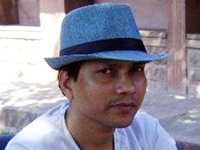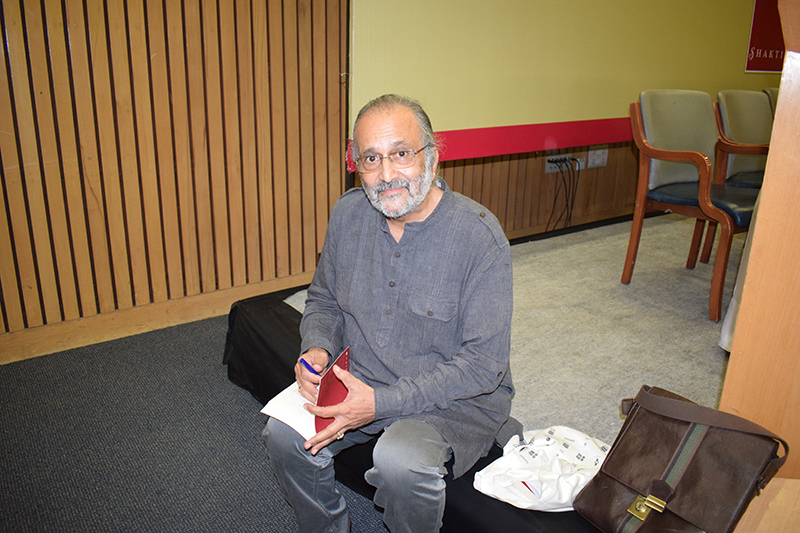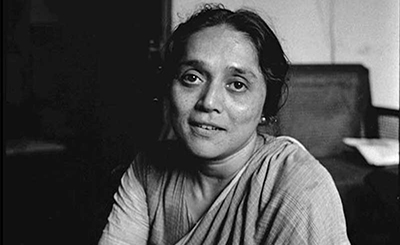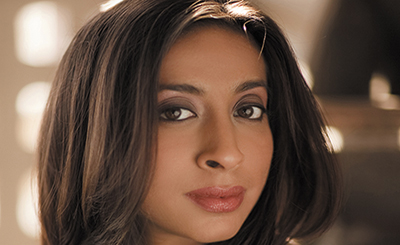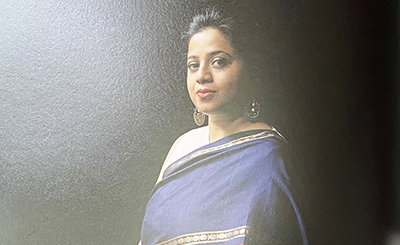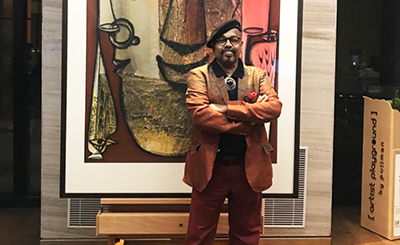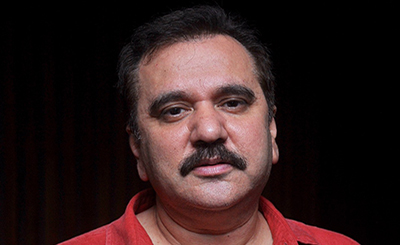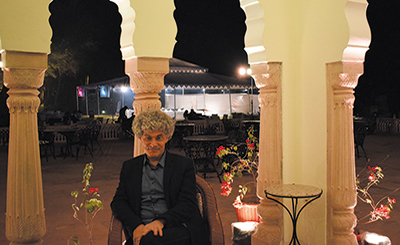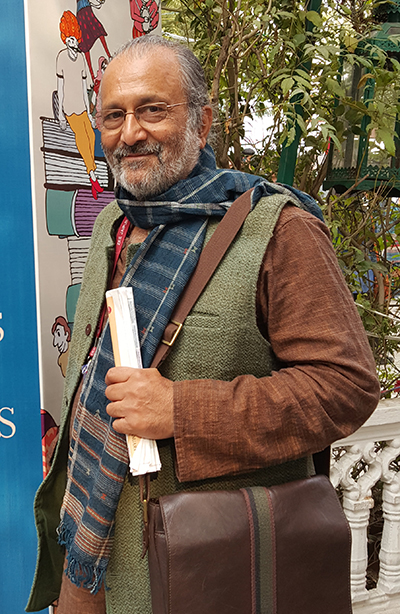
Artist, author and thinker Shakti Maira. Photo: Swati Chopra
Painter, sculptor and thinker Shakti Maira feels beauty is all about excellence in relationality. ‘Beauty is not just how things look, it’s about how things really are,’ says the artist, talking about his book, The Promise of Beauty and Why it Matters, and his recent show, ‘Formed Resonance’
Delhi-based painter, sculptor and thinker Shakti Maira has passionately straddled several terrains and disciplines: art, spirituality, aesthetics, Buddhism, philosophy and education. Fascinated by their intersections, Maira “enjoys the stimulation that comes from crystallising ideas and giving talks and the conversations they usually engender”.
Maira has been exhibited around the world. His works are also in the collections of the National Gallery of Modern Art in New Delhi. Maira’s first book, Towards Ananda: Rethinking Indian Art and Aesthetics (2006) focused on contemporary art and its place in the emerging global art scene. The Promise of Beauty and Why It Matters, his second book, has been published by HarperCollins India this year. In the book, Maira engages 18 thinkers in a series of conversations around the difficult, enthralling notion of beauty.
Maira’s latest show, ‘Formed Resonance: Sculpture and Drawings’ was held between March 4-12 at the India International Centre in New Delhi. Maira feels that beauty is all about excellence in relationality. “Real beauty is linked to truth. Real beauty is not about facades... Beauty is not just how things look, it’s about how things really are,” he says.
Excerpts from an interview:
NAWAID ANJUM: There is so much beauty that fills an artist’s world, his works, thoughts and ideas. In a way, beauty is an artist’s enterprise. As an artist and sculptor, what is your own approach to beauty?
SHAKTI MAIRA: I wonder if beauty remains an artist’s enterprise these days. So much of the art being made is focused on personal and social angst — anger, suffering, loneliness, injustice, and protests of one kind or another. Dismissing beauty from art has been the recommended position of the high priests of contemporary art — the curators, historians, critics for many years, and much of the installation and digital art being made is anything but beautiful. There are, however, some artists who remain faithful to beauty. I am one. But most of us do make a critical distinction between surface prettiness and a deeper and fuller beauty. We are not trying to make pretty art. But, yes, I find my world, my thoughts and ideas are full of beauty, and so is my work.
NAWAID ANJUM: Your artistic intention has been that your art must effectively integrate all four levels of experience — sensory, emotional, intellectual and spiritual. Is this integration easy to achieve across forms?
SHAKTI MAIRA: I believe all great art does this. A painting or a sculpture, or a piece of music, poetry or dance — all operate at these four levels of experience through the skill of the artist in their chosen medium. So, a painting or sculpture must engage the visual sense, it must evoke, stir and convey some emotions and thoughts. My understanding of the spiritual is beyond all religions, and when I say art should engage with the spiritual, I mean it should uplift, inspire, transform even if momentarily. If art focuses too much on the intellect, as conceptualism does, it is not satisfying as art. Or, if it focuses on a decorative or sensory prettiness, and is devoid of intellectual or emotional ideas, it is superficial art. The best art is integral art, which engages at all these levels of perception and experience.
As to whether it is difficult, I don’t know about other artists, but for me it isn’t at all, because that’s what I try and do in my life.I like to be integrated across these dimensions, and to be aware of their interplay, as much as
possible. This gets carried into my art, making way into all the art-forms I work with.
NAWAID ANJUM: In the world we live in, modernisation and progress, it seems, have come with a certain cost. In Promise of Beauty, you mention about the disturbing degradation of our physical and social environments. How does that affect you as an artist and at a personal level?
SHAKTI MAIRA: It affects me greatly. The pollution and air quality of Delhi, affects the air I breathe and my health. This is true for all of us living here. The degradation of our physical and social environment is seen in so many things — the filth and lack of cleanliness, the constant noise. When you land in Delhi and come out of the airport, you notice that Delhi smells.
I think artists, in general, are sensitive sorts. Their senses tend to be more acute. They perhaps notice and are troubled by ugliness more than the average person. And, I think they are moved to improve the world in their own way, to bring more beauty into it. In the book I write about this and suggest that even the artist who are making ugly conceptual or protest art, are actually motivated to bring attention to what you call ‘physical and social degradation’ so that by gaining our attention to these concerns, they hope these may be addressed.
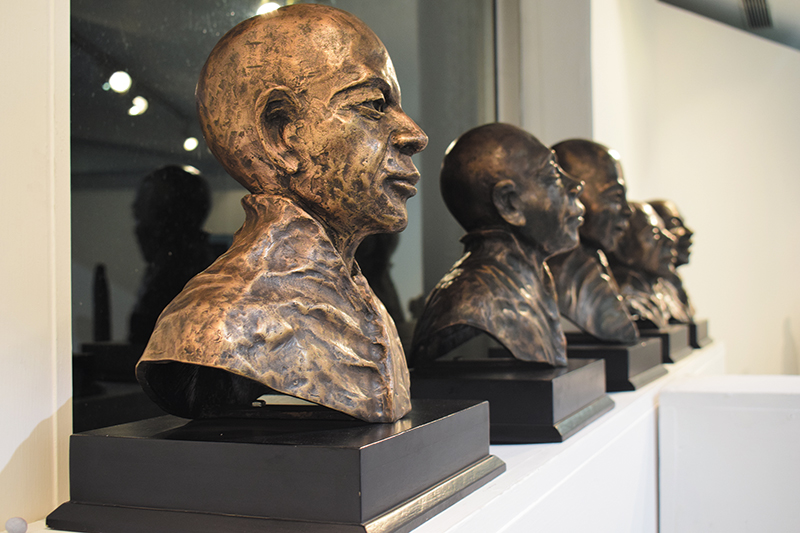
Shakti Maira's works on display at the India International Centre in New Delhi as part of his show Formed Resonance. Photo: Shireen Quadri
NAWAID ANJUM: Is beauty really all about balance and harmony? Does the experience of beauty vary across cultures, making it a subjective phenomenon?
SHAKTI MAIRA: Beauty is really all about excellence in relationality. This is a new and exciting way of understanding beauty in pretty much all contexts. Balance and harmony are two very important qualities of relationality. But don’t forget that relationality is by definition contextual and dynamic. Balance isn’t static. It can’t be. Balance and harmony occur in the continuous flux and movement, in the push and pull, of all natural and human-made things and systems. Beauty cannot be defined and frozen, and it is best not to try and eternalize it.
Without doubt the notions of beauty vary across cultures. Even within a culture, there is a great deal of subjectivity. Diverse people and diverse cultures lead to a diversity of beautiful experiences. So, yes, of course, the experience of beauty is a subjective phenomenon. But a deeper understanding of beauty reveals that beauty is both an ‘experience’ and a ‘state’ of things, people and systems.
To ignore or minimize beauty because it is subjective is a paradigm error caused by an emphasis on the measurable. This is seen in both science and economics. But this is a longer discussion which is attempted in the book. Yet, surely most people will agree that there are many subjective things that are seriously important to the health and well-being of our personal lives, and the well-being of the world such as love, empathy and beauty.
NAWAID ANJUM: The book looks at beauty through several intellectual prisms — conversations with scientists, philosophers, artists, activists and thinkers. What conclusions have you drawn about beauty after these wide-ranging explorations into the importance of beauty.
SHAKTI MAIRA: That beauty is more than in the eyes of the beholder. That it is a universal experience. People across cultures may find different things beautiful, but the experience of beauty itself is similar. There is a beauty instinct, and it has a profound evolutionary role — well beyond mating preferences. It is about relationality. It is systemic. Its patterns are seen in mathematics and in pattern language. Beauty exists at many levels. Aesthetic intelligence may be an important dimension. Beauty could be a potent way of understanding our problems and creating solutions to many of our problems. I try and summarize these in the Epilogue.
Page
Donate Now
More from Arts
Comments
*Comments will be moderated



